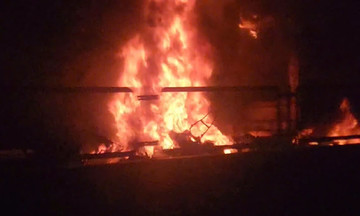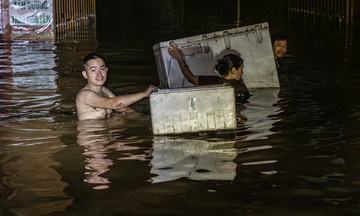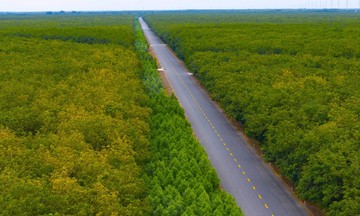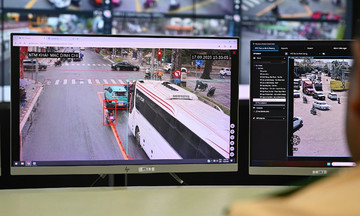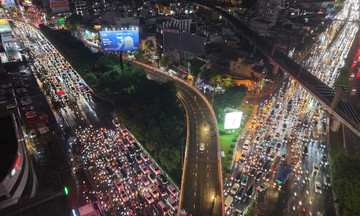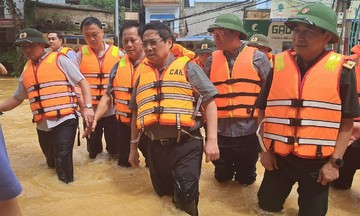At 10 a.m. today, Typhoon Kajiki reached maximum sustained winds of 149 km/h, equivalent to a Category 12-13 typhoon, with gusts up to Category 16, according to the National Center for Hydro-Meteorological Forecasting. The typhoon was located approximately 585 km east of Nghe An and 560 km east of Ha Tinh. Over the next three hours, it was projected to move west at a speed of about 15 km/h.
In response to the typhoon, the Dyke Management and Disaster Prevention Department announced that seven coastal provinces and cities from Ninh Binh to Hue, and including Quang Ngai, have issued sea travel bans. Ha Tinh and Hue issued the ban between 6 p.m. and 7 p.m. yesterday, while Ninh Binh, Thanh Hoa, Nghe An, Quang Tri, and Quang Ngai implemented bans between 5 a.m. and 8 a.m. today.
The provinces of Thanh Hoa, Quang Tri, Hue, and Da Nang have prepared to evacuate over 152,000 households, totaling nearly 586,800 people from vulnerable areas. Da Nang has the largest evacuation plan, with 52,500 households and 210,000 people. Quang Tri plans to evacuate over 42,000 households and more than 155,000 people. Thanh Hoa will evacuate nearly 41,000 households and almost 170,000 people, while Hue will move over 16,300 households, totaling more than 52,100 people.
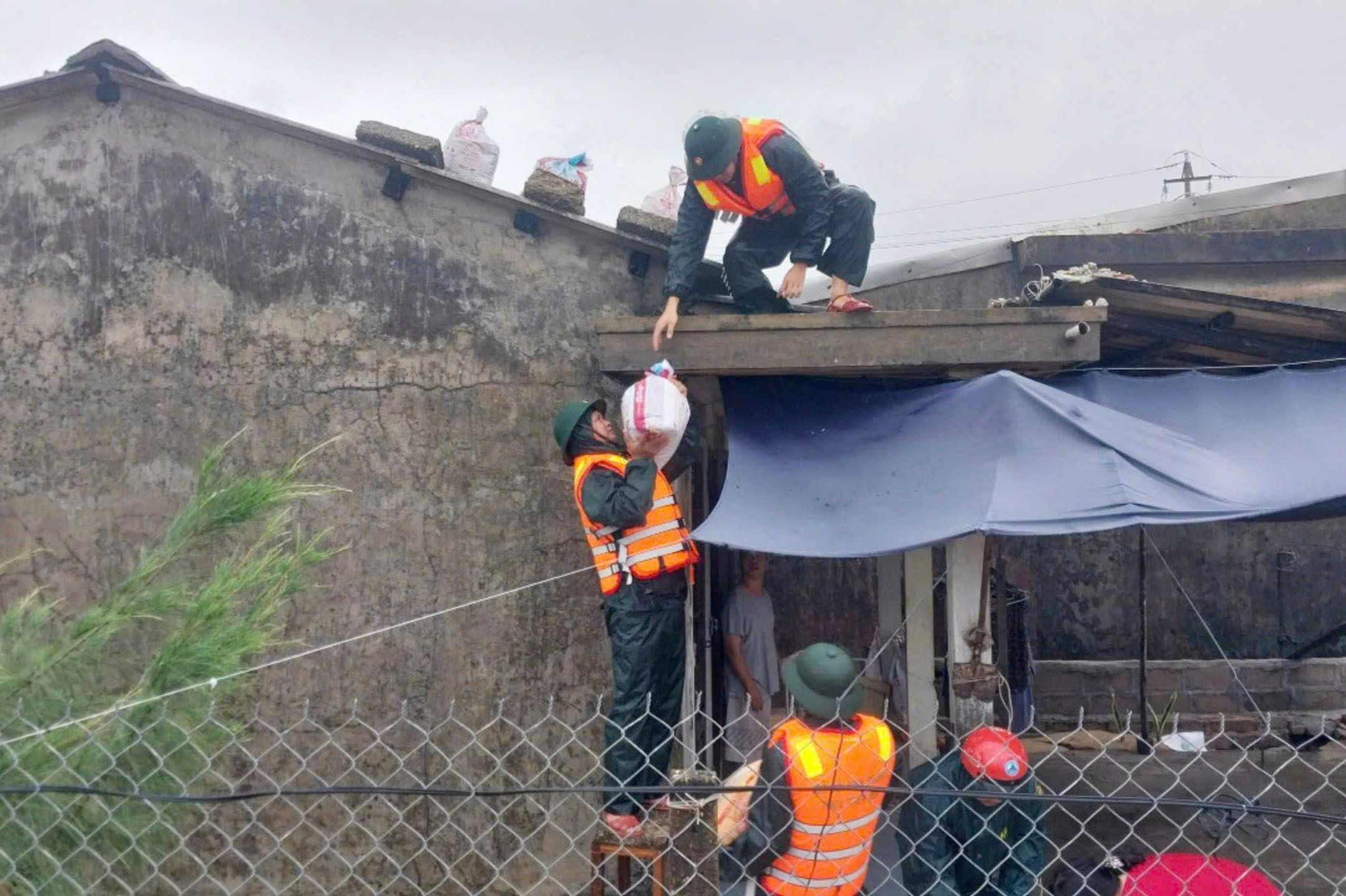 |
Soldiers help residents reinforce their homes before the typhoon in Hue City. Photo: Vo Thanh |
Soldiers help residents reinforce their homes before the typhoon in Hue City. Photo: Vo Thanh
As of 6 a.m. today, the Border Guard Command's Civil Defense, Disaster Prevention and Search and Rescue Committee had notified, accounted for, and guided 59,613 vessels with 248,820 people about the typhoon's development and path, allowing them to take proactive preventative measures.
Of these, 276 vessels with 1,921 people were operating in the North East Sea and the Paracel Islands. 49,000 vessels with 202,000 people were docked at ports, and 10,330 vessels with 44,660 people were operating in other areas.
The Ministry of Construction reported 359 seafaring vessels and inland waterway vehicles currently operating in the area from Thanh Hoa to Da Nang.
The total aquaculture area in the coastal provinces from Thanh Hoa to Quang Tri is 611 hectares, with approximately 5,745 cages and rafts of various types, and 384 aquaculture watchtowers.
In the North Central Coast region, there are 294,500 hectares of rice paddies. Of these, 1,010 hectares have ripened, 129,800 hectares are in the flowering to ripening stage, and 143,000 hectares are in the elongation stage. The area of fruit trees is 77,200 hectares, including 17,700 hectares of banana and 27,800 hectares of citrus fruits nearing harvest. 57,000 hectares of rubber plantations could be affected by the typhoon.
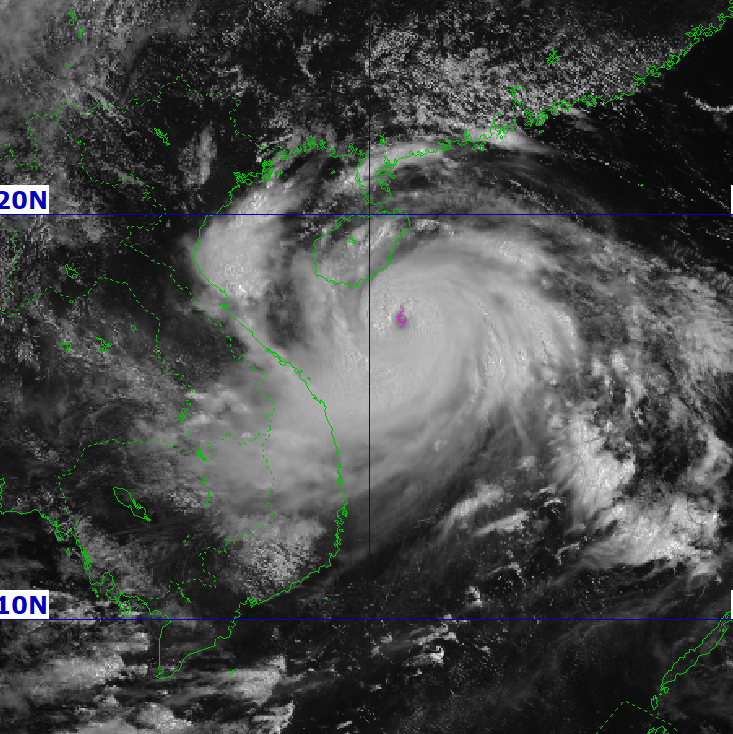 |
Satellite cloud image of Typhoon Kajiki at 10 a.m. Photo: Hydro-Meteorological Department |
Satellite cloud image of Typhoon Kajiki at 10 a.m. Photo: Hydro-Meteorological Department
Northern Vietnam has a total of 2,495 reservoirs, with an average capacity of 66-95% of their design capacity. 47 reservoirs are currently under repair or upgrade. The North Central Coast region has 2,323 reservoirs, with an average capacity of 71-82% of design capacity, and 65 are undergoing repairs or upgrades. The sea dyke and river estuary systems in the provinces from Thanh Hoa to Da Nang have 37 critical and vulnerable locations, with three projects currently under construction.
In a telegram on the afternoon of 23/8, Prime Minister Pham Minh Chinh urged ministries, agencies, and localities to focus on responding to Typhoon Kajiki, especially the coastal provinces from Quang Ninh to Quang Ngai. Localities were instructed to urgently evacuate residents, prohibit sea travel from 24/8, mobilize forces to help people reinforce their homes, and prepare food and essential goods in areas at risk of isolation.
The Prime Minister also directed localities to postpone unnecessary meetings and restrict traffic during the typhoon. He emphasized proactive and safe operation of hydropower and irrigation reservoirs to prevent cascading floods and unexpected situations. The Ministry of Agriculture and Rural Development was tasked with monitoring the typhoon's progress and ensuring the safety of dykes and agricultural production.
The Prime Minister also assigned the Ministry of Agriculture and Environment to lead a working group to inspect, urge, and coordinate with localities in directing typhoon response in Thanh Hoa and Nghe An. The Ministry of National Defense was tasked with leading a working group to inspect and direct typhoon and flood response in Ha Tinh and Quang Tri.
Gia Chinh



